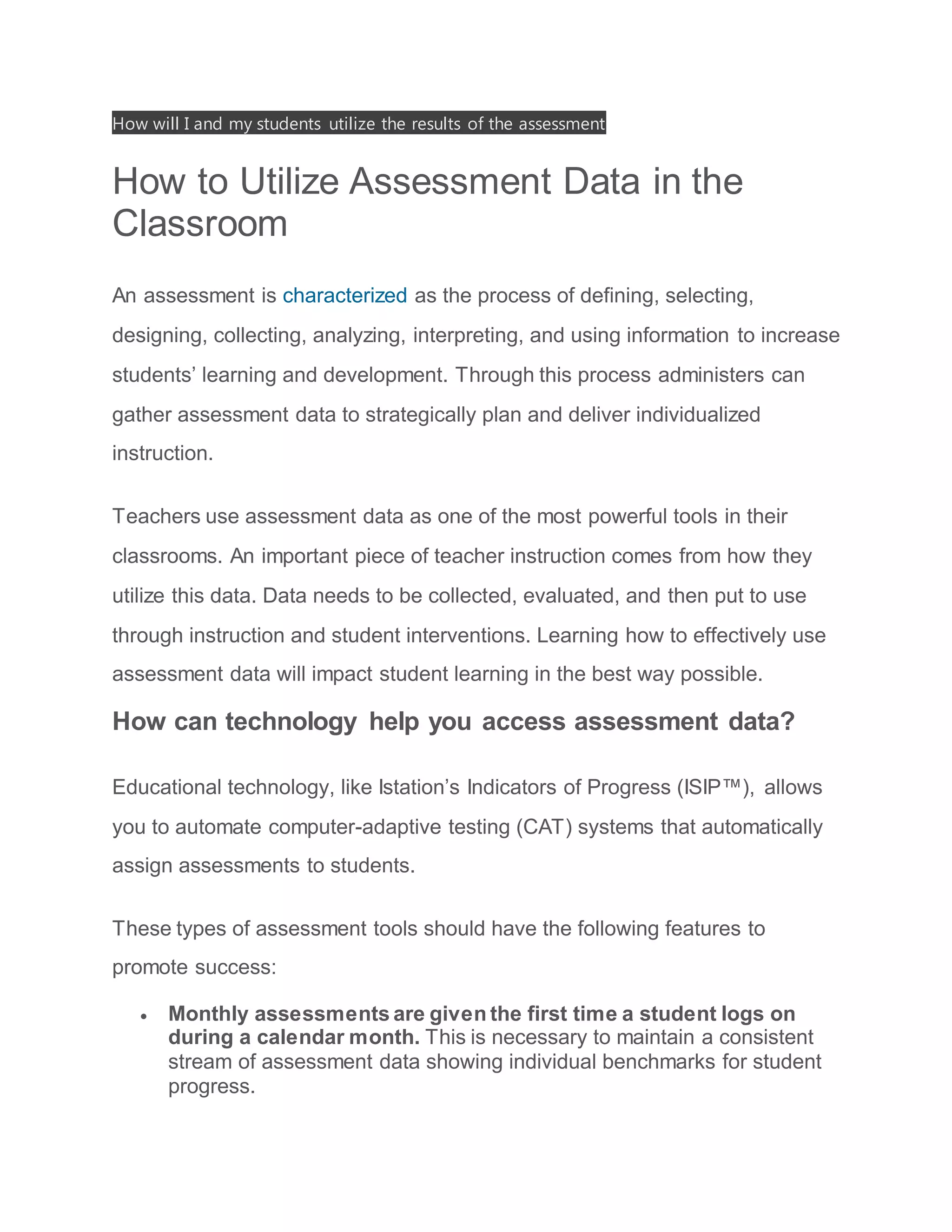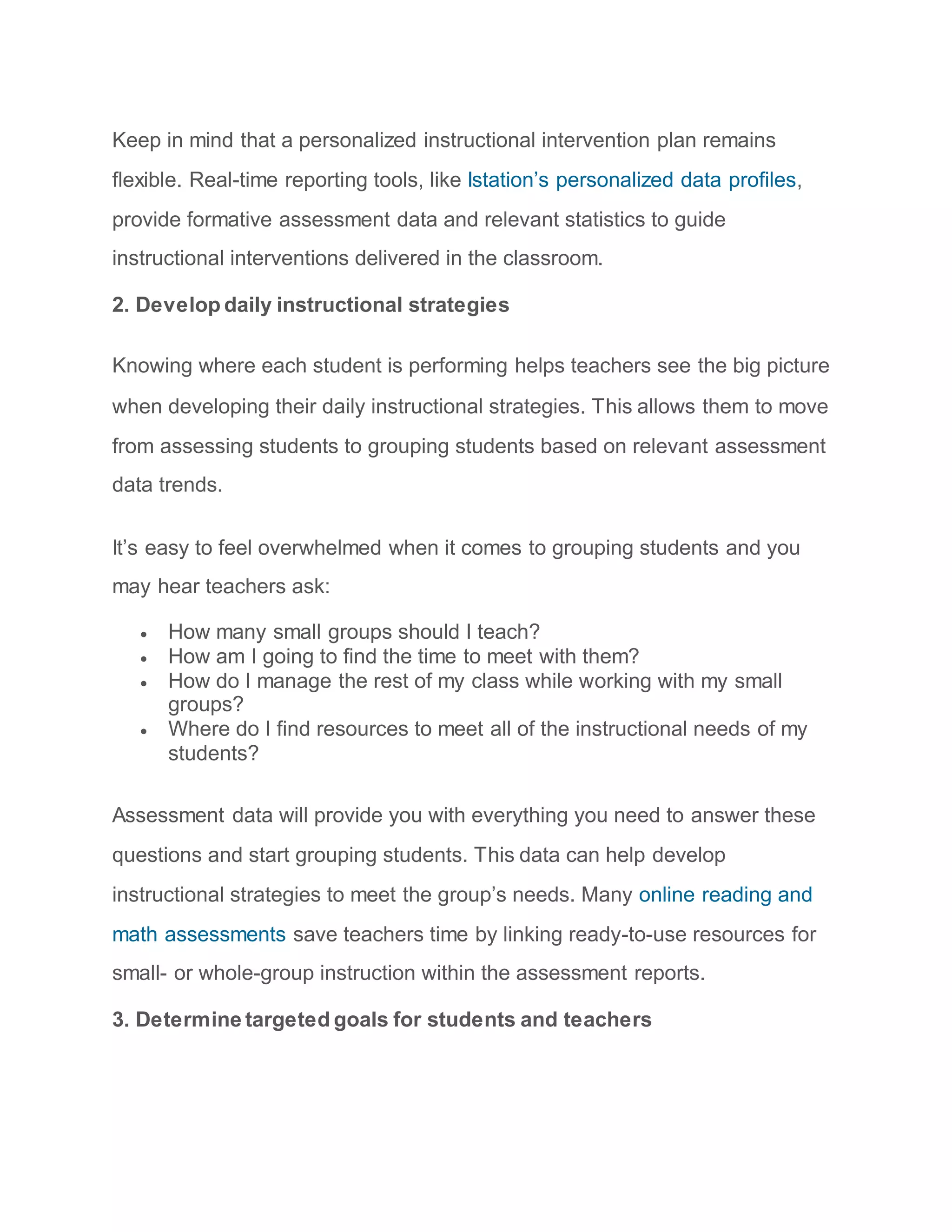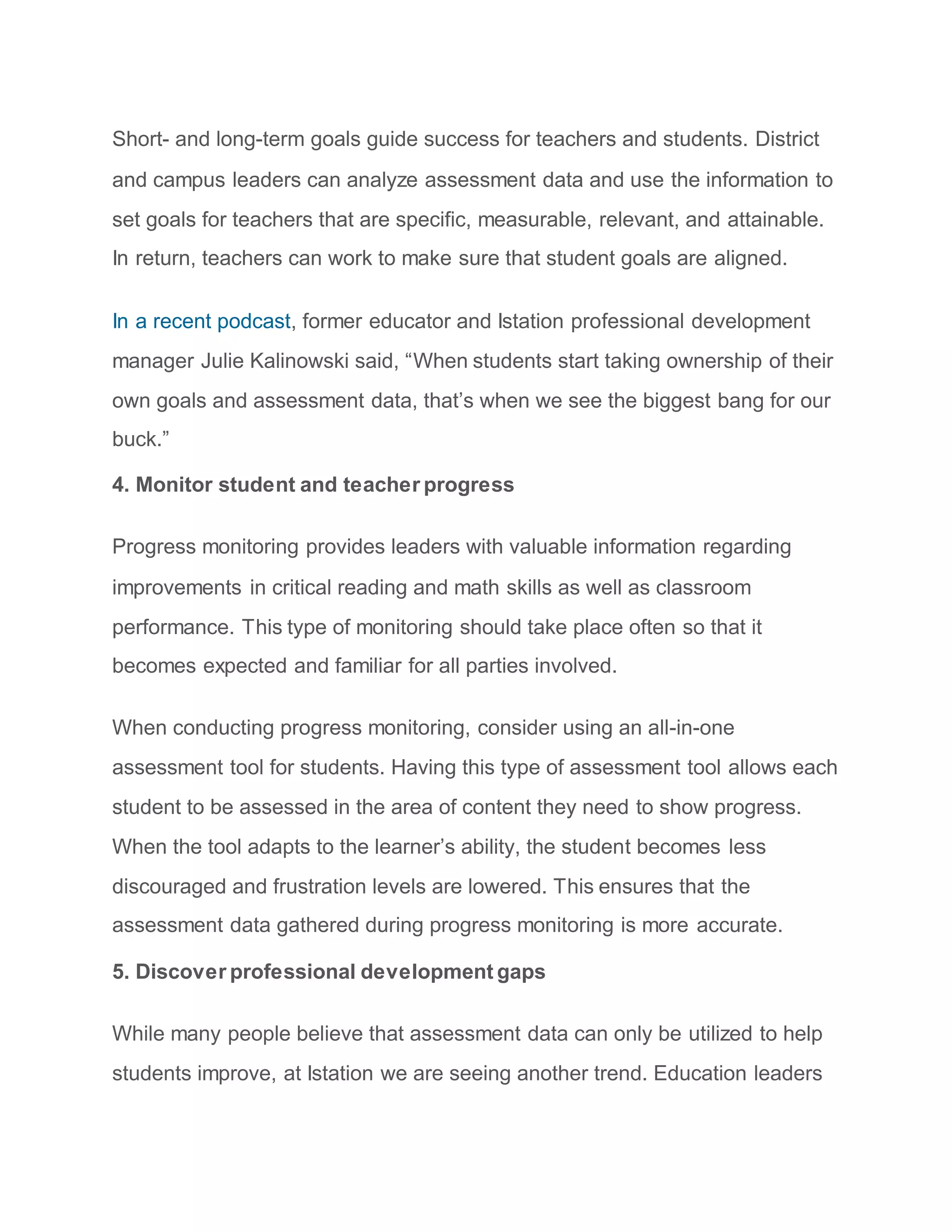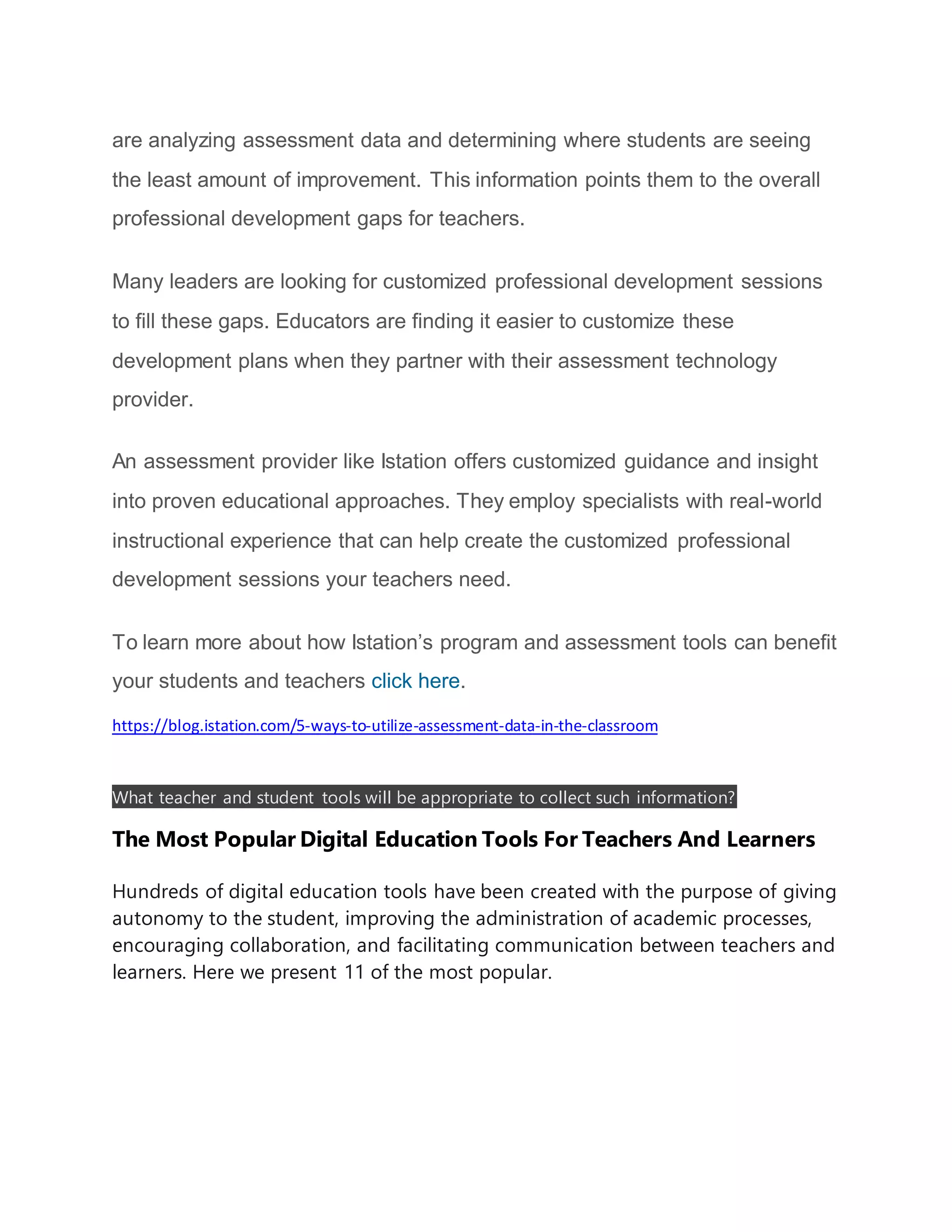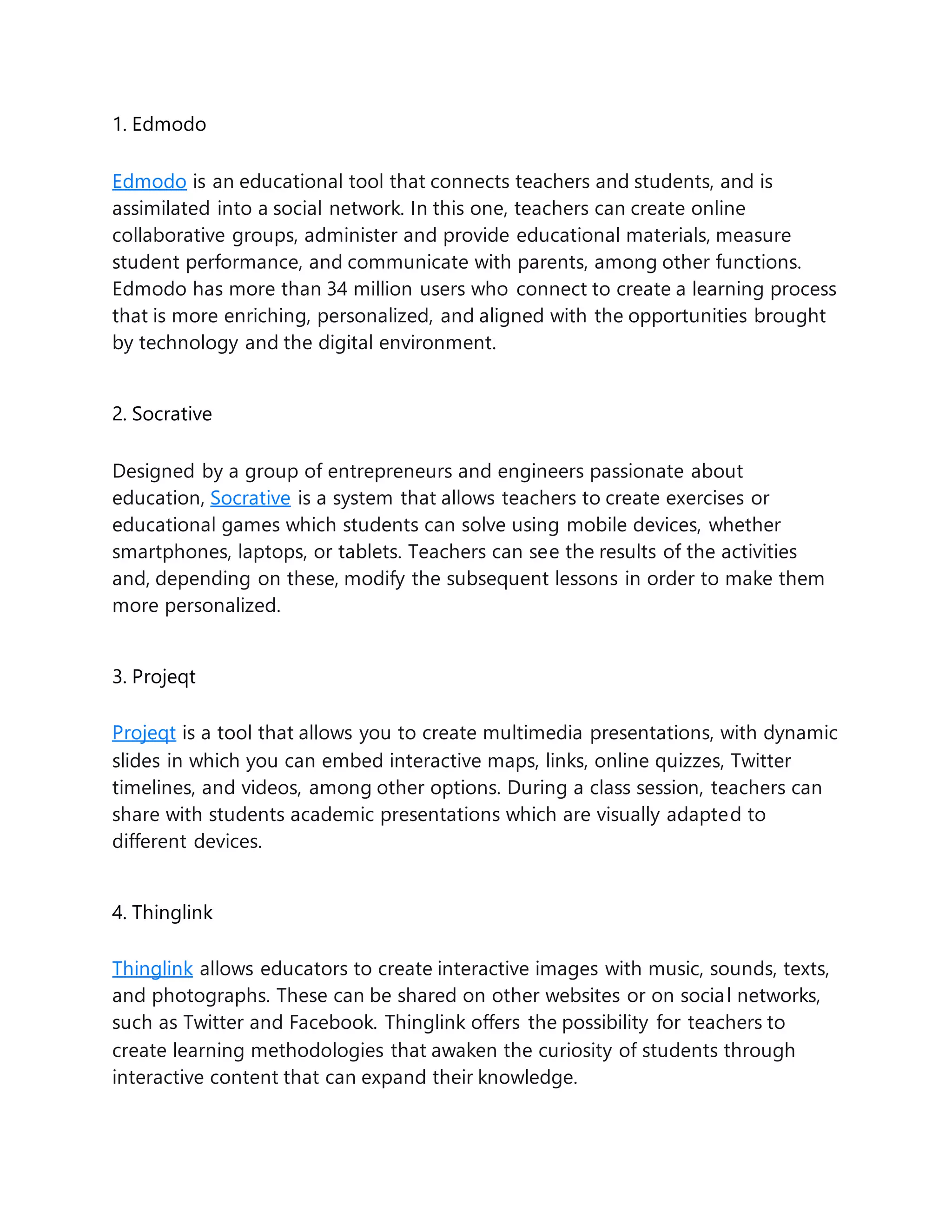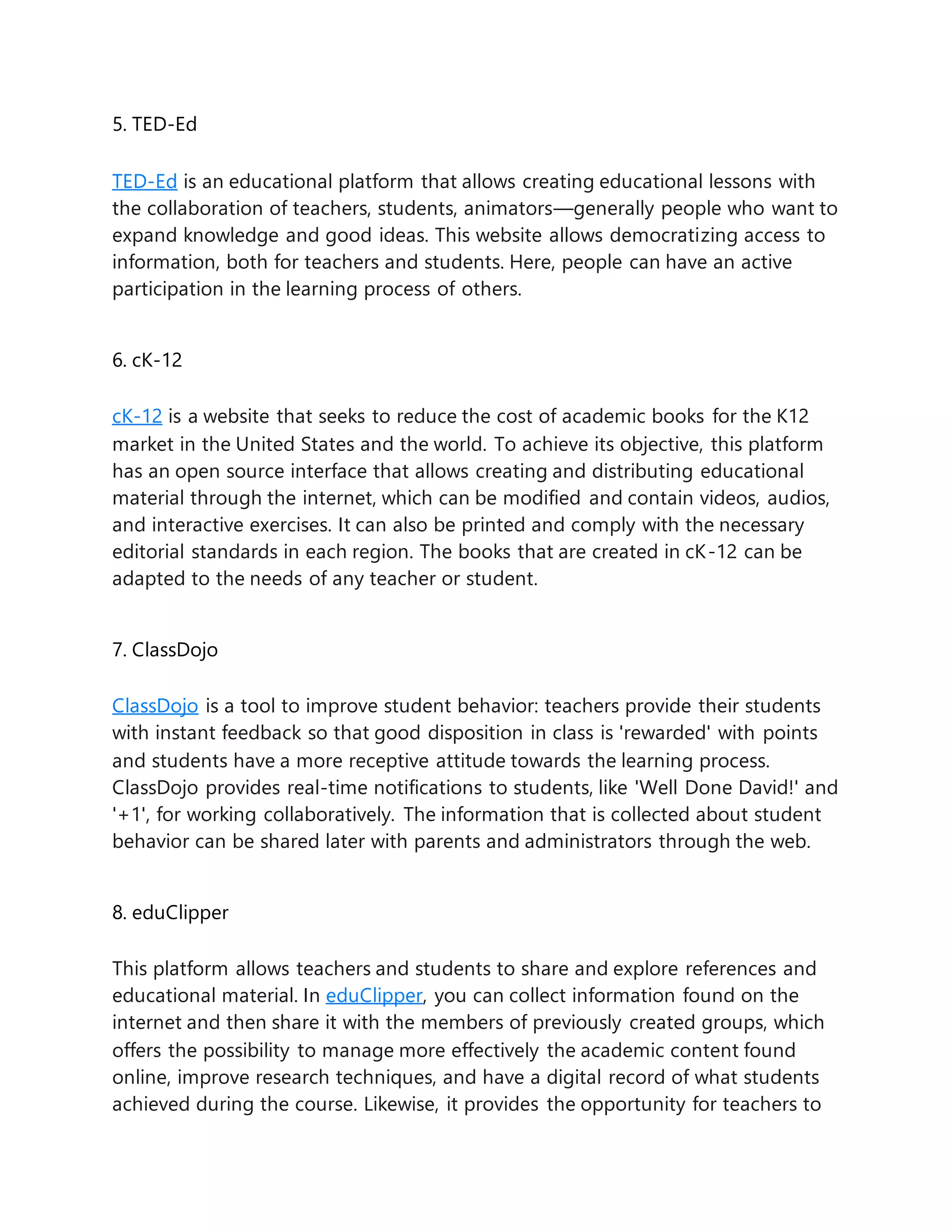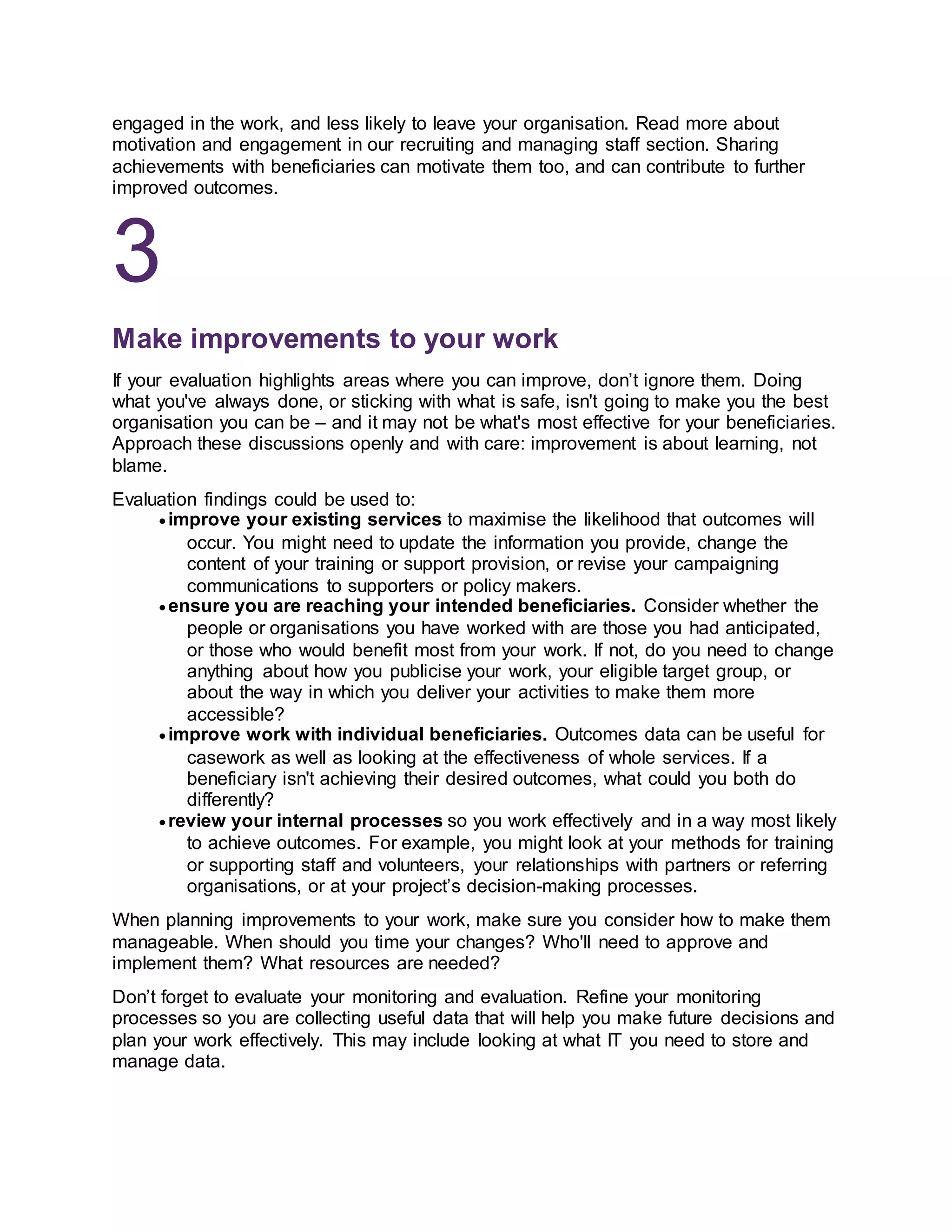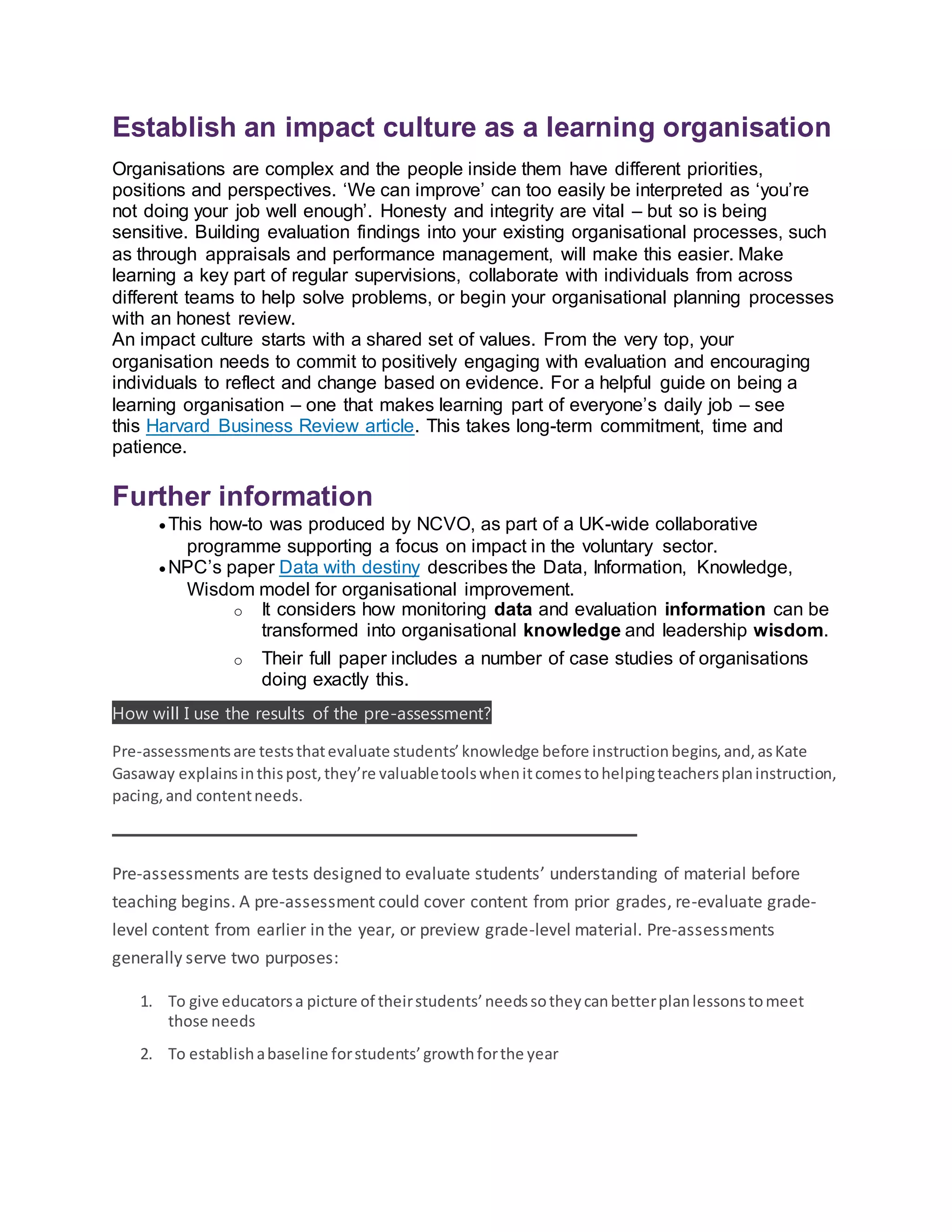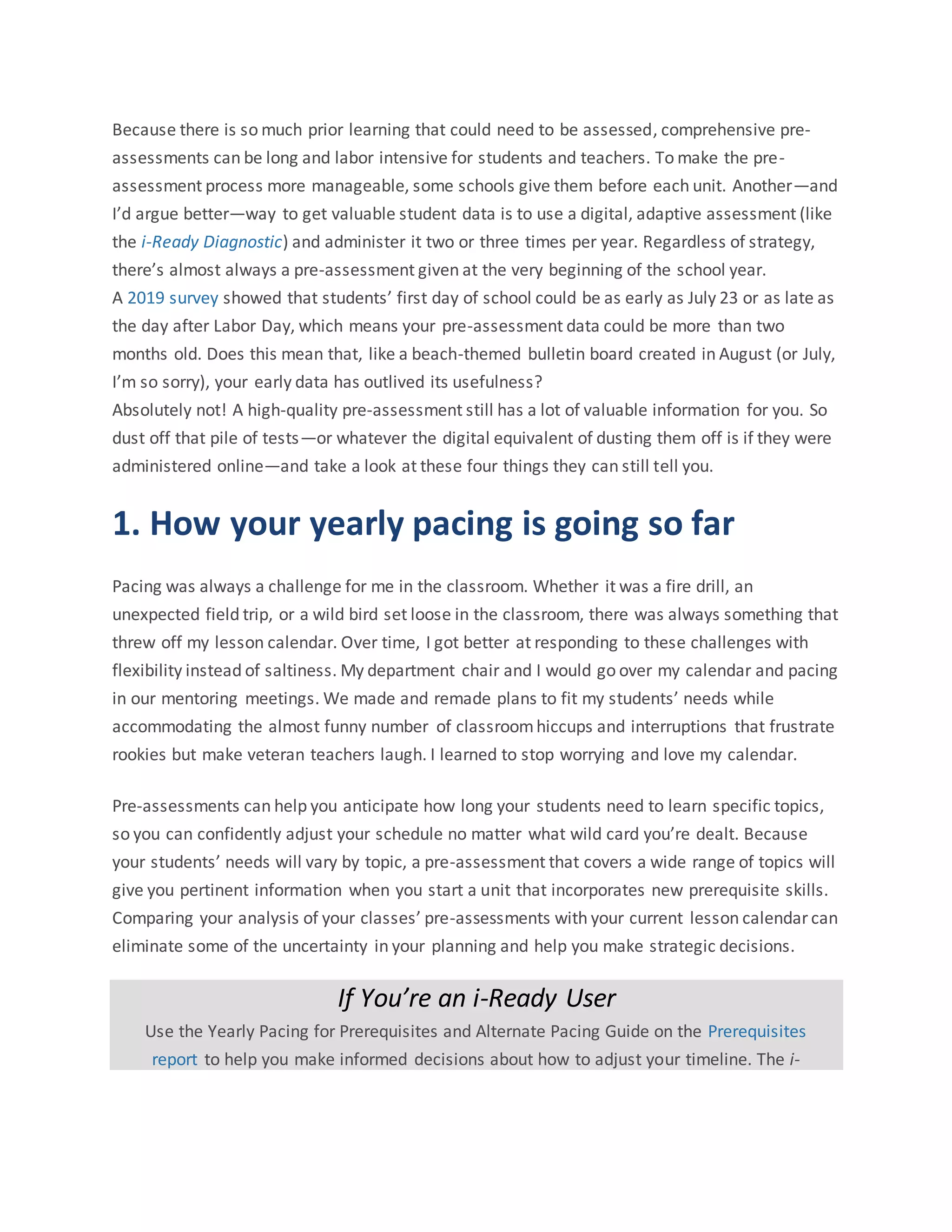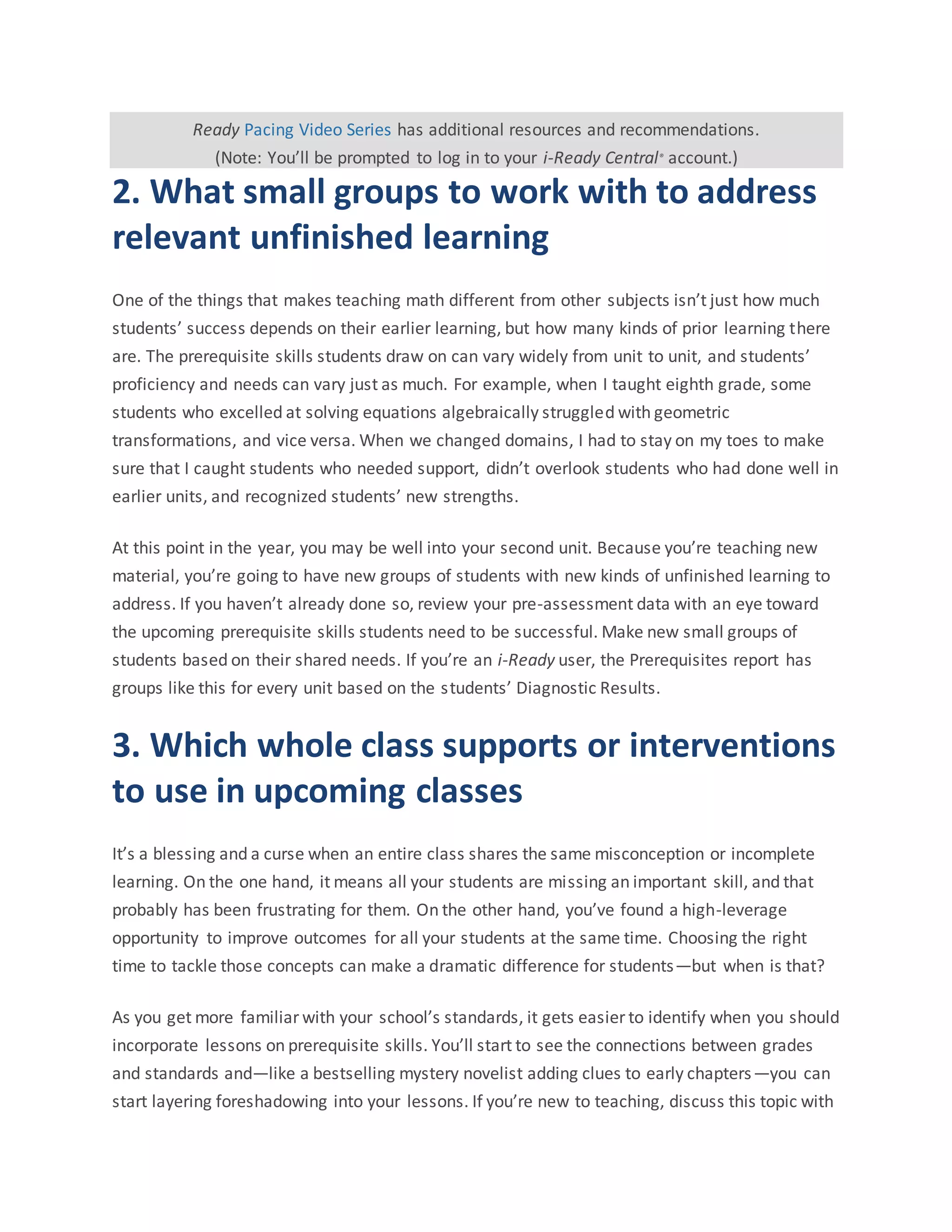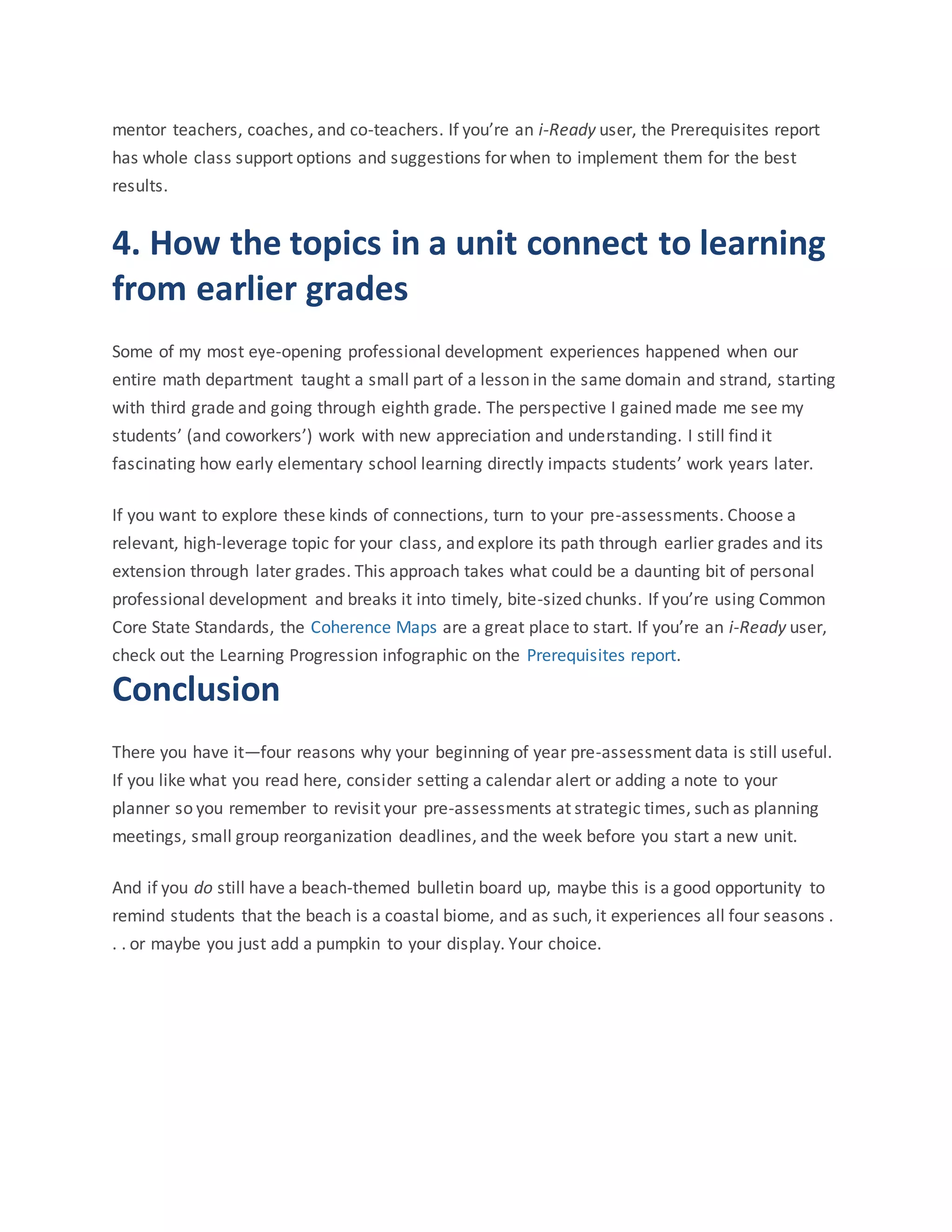The document provides guidance on how teachers can utilize assessment data from various tools to improve student learning and instruction in five key ways:
1. Plan individualized instructional interventions for struggling students based on their strengths and weaknesses.
2. Develop daily instructional strategies like grouping students based on their performance levels.
3. Set targeted goals for students and teachers to guide success.
4. Monitor student and teacher progress regularly to track improvements.
5. Discover professional development needs for teachers based on areas where students see the least growth.
